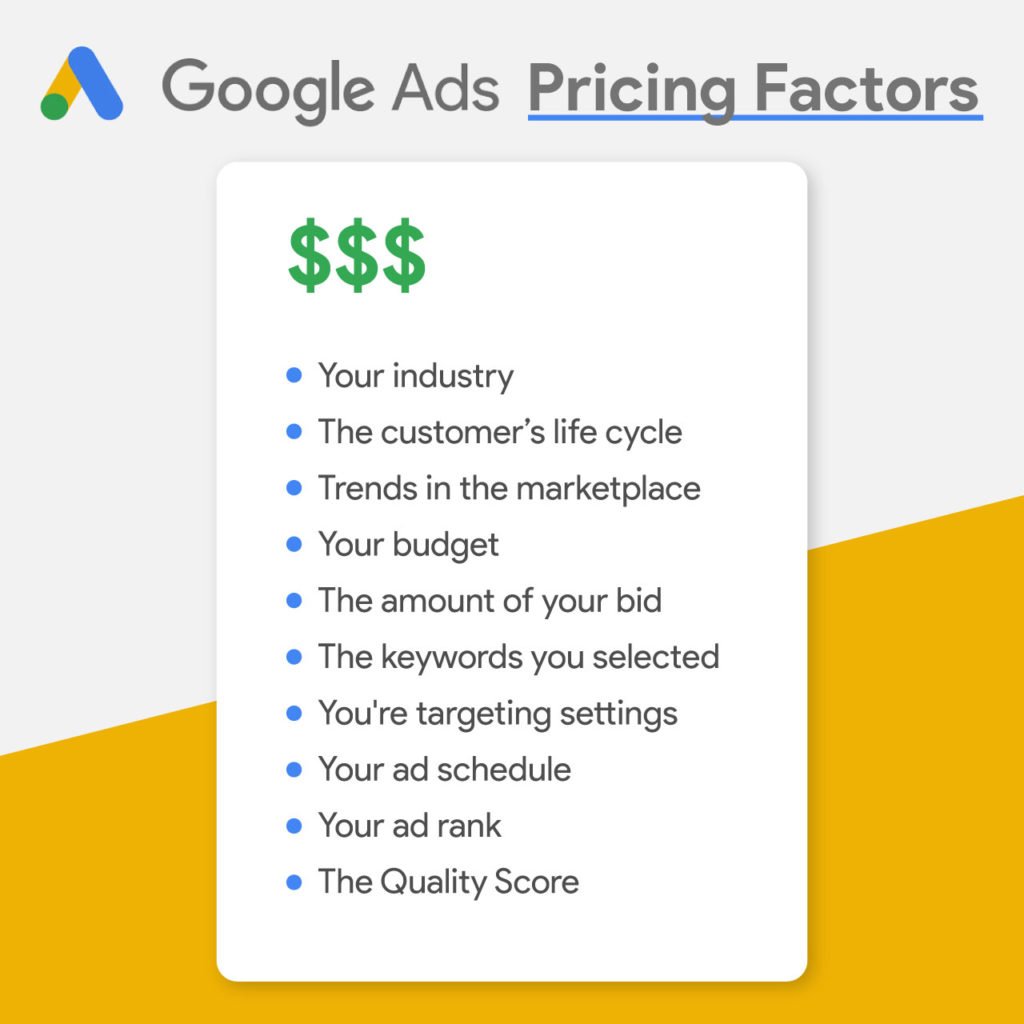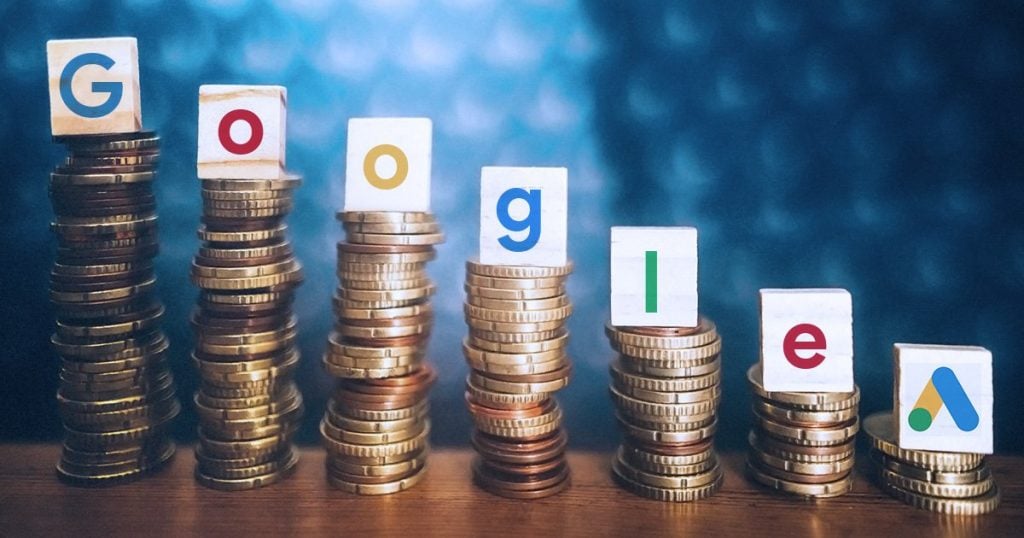Google Ads is a popular PPC advertising platform that allows you to create ads, bid on specific keywords, and set up a budget for every click that you get. When users search for one of your targeted keywords, your ad will appear at the top of the search results if your bid is higher than other advertiser’s bids. All this bidding business happens in real-time, but how much are Google Ads really?
The amount you choose to spend on a Google Ads campaign is up to you. You can spend a little or spend a lot. The good news is you only have to pay for an ad when a user actually clicks on it.
That being said, it can be tough to understand the real cost of your ad campaigns. What’s more, click fraud could be lurking behind the scenes, wasting away your ad campaign budget.
So, taking all this into consideration, how much are Google ads, really?
Well, to understand the true cost of Google ads, you should first understand how to
calculate your Google Ads spending, ROAS, and how to protect your campaigns against click fraud.
Let’s dive right into that!
Ways to Calculate Your Google Ads Investment
To answer the question, “How much do Google ads cost?” you have to learn a little bit about the ways to calculate it.
To be honest, Google isn’t very transparent about how they charge for clicks on Google Ads. However these are some of the known factors they use when deciding on Google Ads pricing:

- Your industry
- The customer’s life cycle
- Trends in the marketplace
- Your budget
- The amount of your bid
- The keywords you selected
- You’re targeting settings
- Your ad schedule
- Your ad rank
- The Quality Score
Given that these are just some of the known factors Google Ads considers in its pricing, it’s starting to make sense why it’s so difficult to give a simple answer to How much are Google Ads. Right?
The Nitty-Gritty of Calculating Google Ads
Google Ads campaigns are highly customizable, and for that reason, you can influence a lot of the elements influencing their pricing. Except for your industry, maybe, everything else is more or less within your power to adjust and change.,
With that in mind, let’s dig into how Google’s auction model works. The auction starts when a user searches for something on Google. If they type in the keywords that match the ones advertisers are actively bidding on, eligible ads get sent to the auction.
At that point, your ad gets an Ad Rank based on your maximum bid for that specific keyword and your ad’s Quality Score.
Curious to learn about the Ad Rank formula? Here it is:

Here’s how this works in a practical sense. Let’s say you set your max bid at $6 and your ad has a Quality Score of 8. Your Ad Rank is 48. For every auction, whoever ends up with the highest Ad Rank wins the top ad spot.
That’s not all, your Ad Rank plays a role in how much Google charges you per click. Here’s the formula they use to calculate your actual cost-per-click:

Here’s a little fun fact for you. You can actually end up spending less on your Google Ads investment and achieve a high ad position if your ad has a high Quality Score.
What other things affect your Google Ads investment?
Take a look at the average costs for Google Ads pricing for a small business:
- Ad spend-$9,000 to $10,000 month
- Cost-per-click on the Google Search Network-$1 to $2 per click
- Cost-per-click on the Google Display Network-$1 or less per click
- Professional management for Google Ads-$350-$5,000 month or 12-30% of ad spend month
- Pay-per-click management tools-$15 to $800 month
So, it’s a given that you need to get a good grip on how much you’re investing in Google Ads. Additionally, there’s something just as important that you should be paying attention to, and that’s your Google Ads ROAS (return on ad spend).
Google Ads ROAS
Just for the sake of clarity, ROAS is a common digital marketing term that means “return on ad spend”. ROAS is a little like ROI in that it gives you data about how well your Google Ads investment is paying off.
It’s a metric that tells you how much revenue your business is getting for every dollar that you invest in advertising. Obviously, one of your marketing goals should be to shoot for the stars and get the highest ROAS you can.
Here’s another really great thing about ROAS — you can measure it at various different levels like these:
- Account level
- Campaign level
- Ad group level
All that it takes to calculate ROAS is a symbol equation:
Total conversion value ÷ advertising costs = ROAS
The formula works for every level of your campaign.
I hope you’re not tired of the math just yet because I want to give you one more formula. Conversion value is the amount your company gets every time an ad brings you a sale.
Here’s how to calculate conversion value:

It’s time to put the math lesson aside (pfew! ) and take a look at something that can have a major negative effect on your Google Ads investment for your small business — click fraud.
Cue in horror movie soundtrack.
Google Ads Click Fraud
I get it, understanding all that goes into your Google Ads investment is a lot to take in. But now that everything makes more sense, it will be easier for you to understand what click fraud is and why it’s something that should be keeping you up at night.
How would you feel if someone went into your Google Ads account and racked up a bunch of charges just because they can? That’s exactly what happens with click fraud. For some type of fraudulent reason, someone continually clicks on your ads when they have absolutely no intent to buy from you. And you, my fellow PPC marketer, have the privilege of paying for all that click fraud.
Okay, so you might be thinking what’s the big deal about click-fraud anyway? It doesn’t happen that often, right?
Uh, wrong! Here’s what we know about click fraud:
- Small businesses lost about $7.2 million in revenue from 2016 to 2018. (Search Engine Watch)
- Almost half of all internet traffic is generated by bots. (ClickGUARD, 2020)
- One out of every three dollars spent by advertisers is wasted due to ad fraud. (Media Post, 2019)
- 14% of all PPC clicks are estimated to be click fraud. (ClickGUARD, 2020)
In simple terms, click fraud is fraudulent clicking on ads that generates fraudulent charges for advertisers, and the statistics prove that it’s happening in record numbers.
As click fraud wastes away your budget, it’s kind of like someone taking all your ads down from the internet. No one would ever learn about your business. That works really well for your competitors—your business, not so much!
When click fraud is rampant, the only recourse you have is to increase your Google Ads investment.
Click fraud causes problems—BIG problems:
- It drives your advertising budget up
- It skews your marketing metrics and data
- It can cause you to throw out keywords that could be making you money
- It negatively impacts your marketing decisions
Fear not! It’s time to put all this information together and implement some effective strategies to beat click fraud so your Google Ads budget doesn’t waste away.
How to Beat Click Fraud
Now that you’re aware that click fraud is alive and well, how do you get it stopped?
The first rule of preventing click-fraud is to monitor your Google Ads campaigns. Here’s what to look for:
- Uncommon peaks in impressions
- Uncommon peaks in the number of clicks
- Peaks in clicks without resulting conversions
- A decrease in the number of times a page gets viewed during spikes in impressions or clicks
- A high rates of bounces during spikes in impressions or clicks
- Numerous clicks originating from the same IP address
Don’t worry, you’ll get good at spotting click fraud when you get more familiar with what to look for. Think of it like a detective movie — except real and with financial consequences for your business.
One of the things you may discover is that you’re getting lots of clicks from outside the specified areas. They might be innocent, but they could spell trouble. If this is the case, you can set automated rules to get your ads in front of good leads and block fraudulent clicks at the same time.
Another strategy is to exclude fraudulent clicks that come from tablets and mobile phones. Why? Because bots and smart bots account for 57% of mobile ad fraud.
There are other ways to block click fraud traffic as well:
- Use automation to block all IPs or devices targeting keywords you’re bidding on
- Automatic blocking of IP ranges bringing traffic from devices without a digital fingerprint
- Automatically excluding low-quality placements
- Blocking PPC traffic that doesn’t convert
You could spend many hours trying to detect click fraud and put strategies in place to prevent it. There’s no need to reinvent the wheel. At ClickGUARD, we have the expertise to sniff out click fraud and set up a roadblock before it hacks away at your advertising budget.
What’s more, we’re big on transparency. You get access to full forensics data. There’s no guesswork involved.


